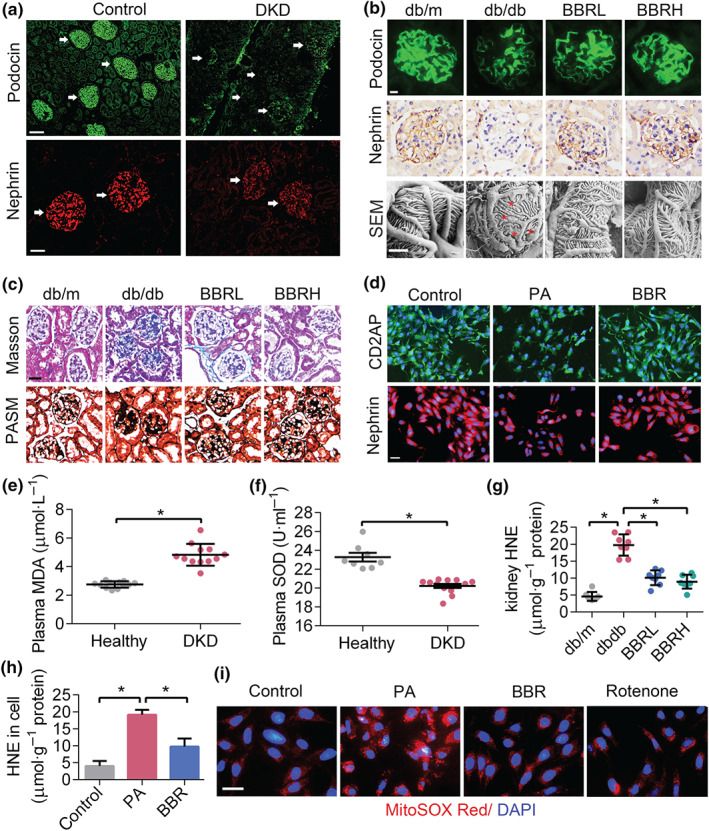FIGURE 2.

Berberine (BBR) decreases overproduction of ROS and podocyte damage. (a) Podocin and nephrin immunofluorescence in human kidney samples. White arrows denote glomeruli. Scale bars: 400 μM for row 1, 200 μM for row 2. (b) Podocin immunofluorescence, nephrin immunohistochemical staining, and SEM micrographs of mouse kidney. The red asterisks in SEM image indicate effaced podocyte foot processes. Scale bars: 50 μM for row 1 and row 2, 2 μM for row 3. (c) The Masson's trichrome staining and PASM staining. Scale bars: 100 μM. (d) CD2AP and nephrin immunofluorescence in cultured podocytes. Scale bars: 100 μM. (e, f) plasma MDA and SOD content in DKD patients and control group. (g, h) HNE levels in mouse kidney and cultured podocytes, respectively. (i) MitoSOX Red in cultured podocytes with different treatment. Scale bars: 100 μM. Data were represented as mean ± SEM. *P < .05, significantly different as indicated. BBRH, db/db mice treated with higher dose of BBR; BBRL, db/db mice treated with lower dose of BBR; DKD, diabetic kidney diseases; HNE, hydroxynonenal; MDA, malondialdehyde; PA, palmitic acid; ROS, reactive oxygen species; SEM, scanning electron microscope
